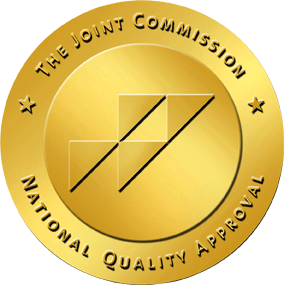Eye Movement Desensitization and Reprocessing (EMDR)
Quickly becoming a standard in treating post-traumatic stress disorder (PTSD), chronic trauma, and complex trauma, eye movement desensitization and reprocessing (EMDR) is a non-invasive therapy that can be life-changing for people who haven’t responded to more traditional approaches for treating mental health or addiction.
EMDR is not an exposure therapy. EMDR does not require that you “relive” or be “retraumatized” by past events. It instead uses bilateral eye movement to help your central nervous system reprocess trauma responses using its natural ability to heal.

What Is EMDR?
Trauma can happen because of many situations, like:
- Military combat
- Natural disasters
- Neglect
- Abuse
- Loss
- Grief
- Bullying
- Illness
- And more adverse life experiences
When you encounter danger or perceived danger, your body’s automatic survival defenses go into fight, flight, or freeze mode. This floods your central nervous system with hormones like adrenaline and cortisol that put your system on high alert.
During fight, flight, or freeze, your brain’s top priority is getting you out of the situation, not processing and thinking through the events that are happening. Because you didn’t fully process the situation when it was happening, you can experience the same trauma symptoms when future events remind you of that time. The same feelings, thoughts, and physiological responses from the original life experience can occur. You have the same internal associations with the trigger. Your brain doesn’t care whether you’re in danger or if it’s only perceiving danger triggered by the past. Your physical and emotional responses will be the same. In this state, you could be unable to:
- Assess the situation and its threat accurately
- React to the situation appropriately for what it is
- Manage physical symptoms—like anxiety and panic—that arise
- Access appropriate coping skills
This is where PTSD treatment like EMDR can be helpful.
How Does EMDR Work?
EMDR for PTSD helps repair neural connections in your brain that were affected by trauma. Guided by the , EMDR attempts to help you reprocess the traumatic events that you were unable to process in the moment because your body was in the fight, flight, or freeze response. AIP is what scientists use to describe the brain’s storage and processing system for memories. Depending on the memory, your AIP could be adaptive (typical and normal) or maladaptive (atypical and unhealthy). Trauma usually triggers maladaptive memory storage and processing. The effects of EMDR gives your brain another chance to process traumatic memories.
Eye movement reprocessing and desensitization doesn’t erase the traumatic memory but instead decreases your arousal and distressful responses that come with it. It draws on the role of eye movements in memory and processing. EMDR uses rapid eye movements (REM) to keep you in the present moment. This is accomplished when a trained therapist uses light to produce rhythmic eye movements or stimulate your eyes to move from side to side. An EMDR therapist guides you through the reprocessing of trauma while you’re in the REM sleep state, which provides a more emotionally safe space to work through the trauma and attach more empowering and realistic beliefs to it.
How Does EMDR Help Addiction?
Almost 50% of people with PTSD struggle with substance use, according to some data. Using drugs and alcohol often becomes a way to cope with the symptoms of trauma, which can include:
- Anxiety disorders
- Depression
- Panic
- Guilt
- Shame
- Hopelessness
- Anger and irritability
- Mood swings
- Nightmares and insomnia
- Intrusive memories
- Health issues
Because EMDR treatments help trauma, when they’re effective, they also decreases the symptoms associated with trauma. If you’re no longer experiencing anxiety, shame, intrusive memories, and other trauma symptoms, you’ll feel less of a need to numb them with drugs and alcohol.
EMDR practice and research on its effect on substance use disorders is still new, but so far, traumatic stress studies suggest these benefits:
- Decreased triggers to use drugs and alcohol
- Improved self-esteem
- Improved ability to manage situations, responsibilities, difficulties, and everyday tasks
- Lowered distress from intrusive memories
- Eased physical symptoms linked to trauma
- Improved resilience to stress from trauma
- Better adherence to behavioral health and addiction treatment
EMDR at Vogue Recovery Center
- Yoga
- Nutrition
- Mindfulness
- Art therapy
Looking for Help?
Trauma symptoms fuel drug and alcohol abuse and are a roadblock to recovery. At Vogue Recovery Center, we’ll help you address the root causes of your addiction like trauma and mental health disorders so you can heal wholly and get the effective treatment needed for long-term recovery.
We’re Here 24/7
Life feels like an everyday struggle right now, but it’s going to get better. Making the decision to get help for substance abuse is the first step in changing everything. Call us for a free, confidential consultation today.



